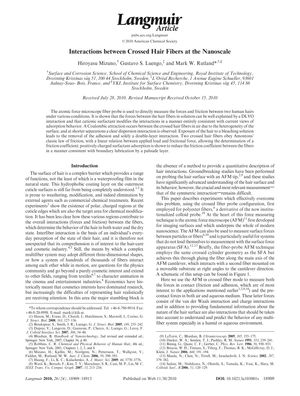Interactions between Crossed Hair Fibers at the Nanoscale
December 2010
in “Langmuir”

TLDR Hair fibers interact through classical forces, which are influenced by treatments and products, important for hair care and other applications.
The study investigated the nanoscale interactions between human hair fibers, measuring forces and friction using an atomic force microscope (AFM). It found that in solution, hair fiber interactions conformed to DLVO theory and were altered by cationic surfactants, which reduced adhesion and friction, consistent with boundary lubrication. In air, crossed hair fibers exhibited Coulombic attraction and van der Waals forces, with bleached hair showing no adhesion and a higher surface potential. The presence of a fatty acid layer on hair fibers led to hydrophobic behavior and attractive forces, which were negated by surfactant adsorption. Native hair had a surface potential of -7 mV and an effective surface charge of -0.04 μC/cm², while bleached hair had a surface potential of -55 mV. The study concluded that classical forces can explain hair fiber interactions and that understanding these forces is crucial for applications in hair care, textiles, and character animation.
View this study on pubs.acs.org →